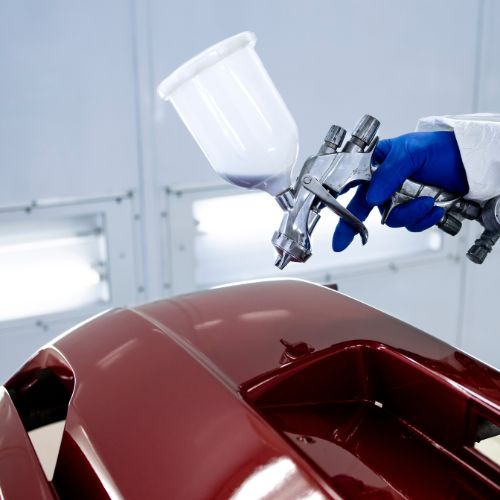When prepping a vehicle for painting, you need to choose the right automotive primer. Some primers are designed for specific applications. Identifying which primer will yield the best results is crucial to providing the best outcome for your customers.
Our guide explores the different types of automotive primers and sheds light on their uses. This information should make automotive painting much easier for you!
Epoxy Primer: The Ultimate Corrosion Protection
Epoxy primers are popular for corrosion protection. They contain polyamide and epoxy resins that form a chemically resistant barrier for superior adhesion to a wide range of substrates. Epoxy primers also provide excellent substrate penetration, making them ideal for heavy equipment, automotive restoration projects, and surfaces with heavy rust or paint layers.
Urethane Primer: The Premium Choice for Filling and Sanding
Urethane primer is perfect when you’re dealing with uneven surfaces or imperfections. It offers high-build capabilities and excellent sanding properties, making it easy to create a smooth finish. Urethane primers can suit various applications, including repair jobs or complete paint refinishes, thanks to their wide range of viscosities. Note that they might not provide the same level of corrosion protection as epoxy primers.
Etch Primer: The Solution to Bare Metal Bonding
An etch primer is indispensable when working with bare metal surfaces. It provides a strong chemical bond and creates an exceptional foundation for subsequent primer or paint layers. By using acid etching agents that “bite” into the metal, this primer improves adhesion and minimizes the risk of peeling or bubbling paint. It’s particularly valuable for surfaces prone to corrosion, like steel or aluminum.
High-Build Primer: A Smooth Finish in Record Time
When time is of the essence, high-build primers step up to the plate. These thick primers are great solutions for leveling out surface irregularities and filling pinholes or small imperfections. High-build primers minimize the need for repeated sanding, saving time and resources. However, we want to point out that high-build primers may require thinning for spray gun application.
The Road to a Flawless Finish Starts With the Right Primer
With a thorough understanding of the different types of automotive primers and auto restoration supplies, you can choose the ideal product for your jobs.


